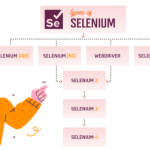The world of data center storage has come a long way since its inception in the 1940s. From early punch cards to modern-day cloud storage, the evolution of data storage has been nothing short of extraordinary. But with this rapid advancement comes the need for understanding and staying up-to-date with the latest trends and technologies.
In this ultimate guide, we will take a deep dive into the evolution of data center storage, from its beginnings to where it stands today. We will explore the impact it has had on businesses and individuals alike, and discuss future possibilities. Whether you are a seasoned IT professional or just curious about data storage, this guide is for you. Let’s get started.
What is Data Center Storage
Data center storage refers to the physical infrastructure and components used for storing, managing, and accessing digital data in a centralized location. This can include servers, storage devices, networking equipment, and software applications.
The primary purpose of data center storage is to provide businesses with a secure and reliable method of storing large amounts of data for future use. By understanding data center storage, organizations can make informed decisions on the best storage solutions for their specific needs. With the increasing amount of data being generated and stored every day, data center storage has become an essential aspect of modern-day business operations.
The Evolution of Data Center Storage
The journey of data center storage began in the 1940s with punch cards and magnetic tape drives. These early storage methods were slow, bulky, and not very reliable. In the 1950s, hard disk drives (HDD) were introduced, offering faster speeds and larger storage capacities. However, they were still expensive and limited to large businesses due to their high cost.
The 1980s saw the emergence of floppy disks and CDs as popular storage options for personal computers. With the rise of the internet and online services in the 1990s, network-attached storage (NAS) and storage area networks (SAN) became popular for organizations to store and access large amounts of data.
In the early 2000s, solid-state drives (SSD) were introduced, offering faster speeds and better reliability compared to HDDs. Cloud storage services also began to gain popularity, allowing users to store and access data remotely over the internet. Today, we see a mix of traditional and modern storage technologies being used in data centers, with an increasing focus on hybrid and cloud-based solutions.
The Impact of Data Center Storage
The evolution of data center storage has had a profound impact on businesses and individuals around the world. It has enabled organizations to store and manage vast amounts of data, leading to increased efficiency, productivity, and innovation. With faster access to data, businesses can make informed decisions quickly, improving their overall performance.
Data center storage has also allowed for the development of new technologies such as artificial intelligence (AI) and big data analytics. These technologies rely on the availability of massive amounts of data to function effectively, and data center storage provides the necessary infrastructure.
For individuals, data center storage has made our daily lives easier with the ability to store and access personal information, documents, photos, and videos from anywhere at any time. It has also paved the way for advanced services such as online banking, e-commerce, and social media platforms.
What is the Future of Data Center Storage?
The future of data center storage is constantly evolving, with the demand for more efficient, scalable, and secure storage solutions growing. With the rise of big data and the Internet of Things (IoT), traditional data center storage methods may no longer be enough to handle the massive amounts of data being generated.
One trend that is gaining popularity is software-defined storage (SDS), which separates the management and control of data storage from hardware, making it more flexible and cost-effective. Another emerging technology is object-based storage, which stores data as objects rather than files, allowing for faster retrieval and better scalability.
Cloud-based solutions are also expected to continue to grow in popularity, with the ability to store and access data remotely becoming a necessity for many businesses. With the increasing demand for faster speeds and lower latency, we may also see a shift towards edge computing, where data is processed and stored closer to its source.
The evolution of data center storage has had a significant impact on businesses and individuals alike. From its humble beginnings with punch cards to modern-day cloud solutions, data center storage has continuously evolved to meet the ever-growing demand for faster, more efficient, and secure storage options. As technology continues to advance, we can expect even more innovative and revolutionary developments in data center storage.













